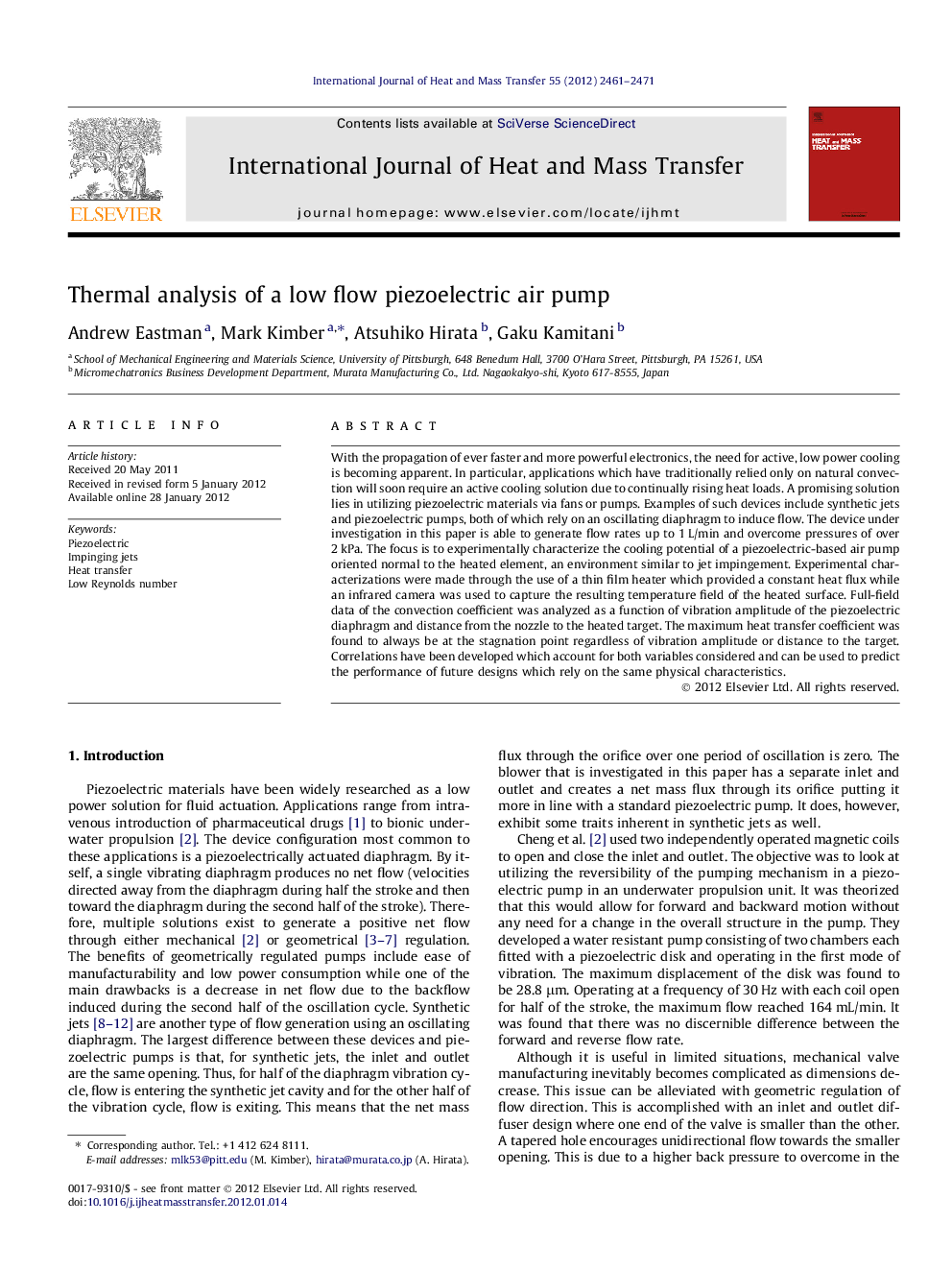| Article ID | Journal | Published Year | Pages | File Type |
|---|---|---|---|---|
| 658908 | International Journal of Heat and Mass Transfer | 2012 | 11 Pages |
Abstract
With the propagation of ever faster and more powerful electronics, the need for active, low power cooling is becoming apparent. In particular, applications which have traditionally relied only on natural convection will soon require an active cooling solution due to continually rising heat loads. A promising solution lies in utilizing piezoelectric materials via fans or pumps. Examples of such devices include synthetic jets and piezoelectric pumps, both of which rely on an oscillating diaphragm to induce flow. The device under investigation in this paper is able to generate flow rates up to 1Â L/min and overcome pressures of over 2Â kPa. The focus is to experimentally characterize the cooling potential of a piezoelectric-based air pump oriented normal to the heated element, an environment similar to jet impingement. Experimental characterizations were made through the use of a thin film heater which provided a constant heat flux while an infrared camera was used to capture the resulting temperature field of the heated surface. Full-field data of the convection coefficient was analyzed as a function of vibration amplitude of the piezoelectric diaphragm and distance from the nozzle to the heated target. The maximum heat transfer coefficient was found to always be at the stagnation point regardless of vibration amplitude or distance to the target. Correlations have been developed which account for both variables considered and can be used to predict the performance of future designs which rely on the same physical characteristics.
Related Topics
Physical Sciences and Engineering
Chemical Engineering
Fluid Flow and Transfer Processes
Authors
Andrew Eastman, Mark Kimber, Atsuhiko Hirata, Gaku Kamitani,
